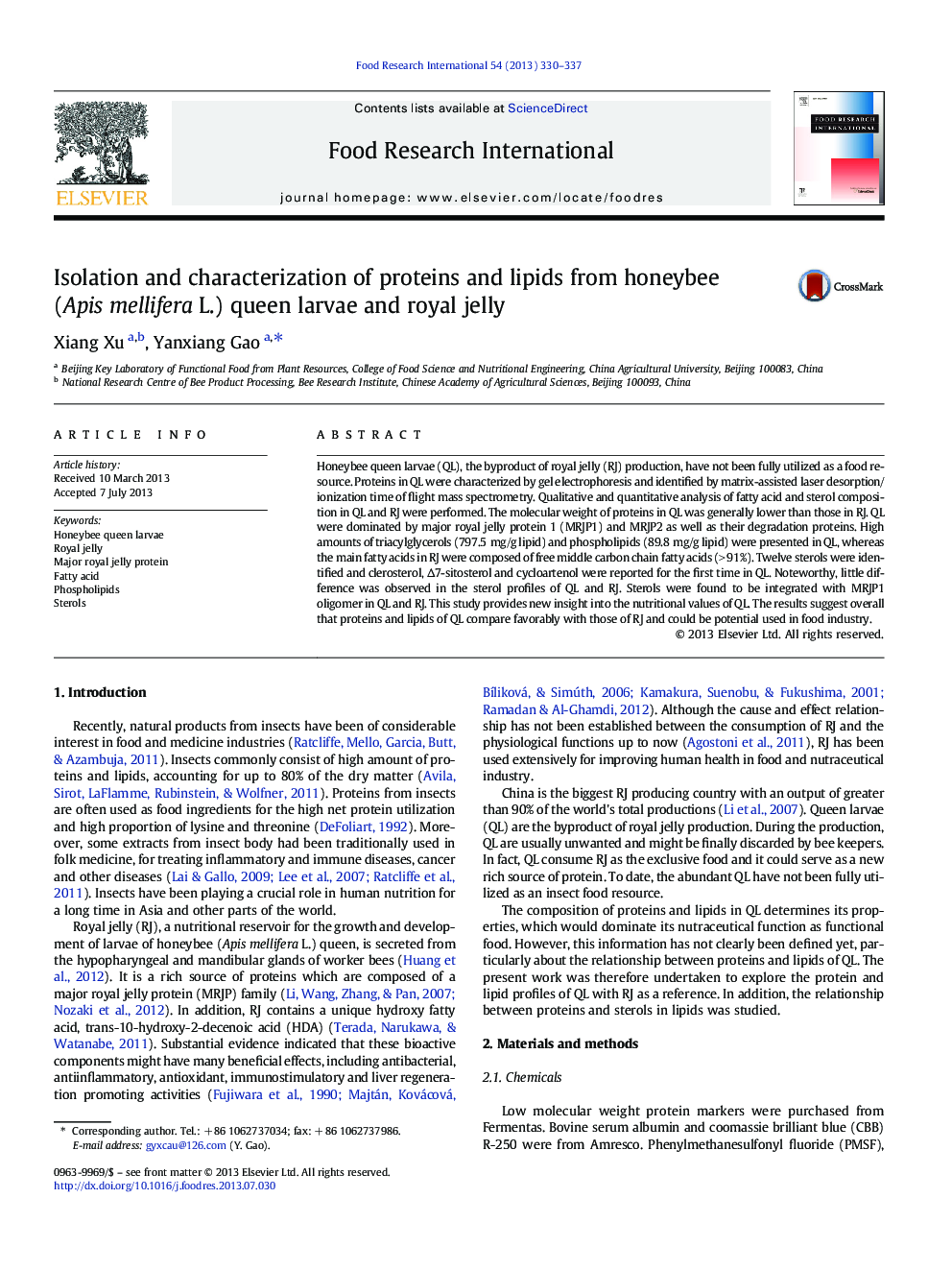| Article ID | Journal | Published Year | Pages | File Type |
|---|---|---|---|---|
| 6397270 | Food Research International | 2013 | 8 Pages |
â¢Bee queen larvae proteins were characterized by SDS/native-PAGE and MALDI-TOF/MS.â¢Fatty acid and sterol composition in bee queen larvae and royal jelly were analyzed.â¢Bee queen larvae were dominated by MRJP1, MRJP2 and their degradation proteins.â¢High amounts of phospholipids were presented in bee queen larvae.â¢Sterols were found to be integrated with MRJP1 oligomer.
Honeybee queen larvae (QL), the byproduct of royal jelly (RJ) production, have not been fully utilized as a food resource. Proteins in QL were characterized by gel electrophoresis and identified by matrix-assisted laser desorption/ionization time of flight mass spectrometry. Qualitative and quantitative analysis of fatty acid and sterol composition in QL and RJ were performed. The molecular weight of proteins in QL was generally lower than those in RJ. QL were dominated by major royal jelly protein 1 (MRJP1) and MRJP2 as well as their degradation proteins. High amounts of triacylglycerols (797.5Â mg/g lipid) and phospholipids (89.8Â mg/g lipid) were presented in QL, whereas the main fatty acids in RJ were composed of free middle carbon chain fatty acids (>Â 91%). Twelve sterols were identified and clerosterol, â7-sitosterol and cycloartenol were reported for the first time in QL. Noteworthy, little difference was observed in the sterol profiles of QL and RJ. Sterols were found to be integrated with MRJP1 oligomer in QL and RJ. This study provides new insight into the nutritional values of QL. The results suggest overall that proteins and lipids of QL compare favorably with those of RJ and could be potential used in food industry.
